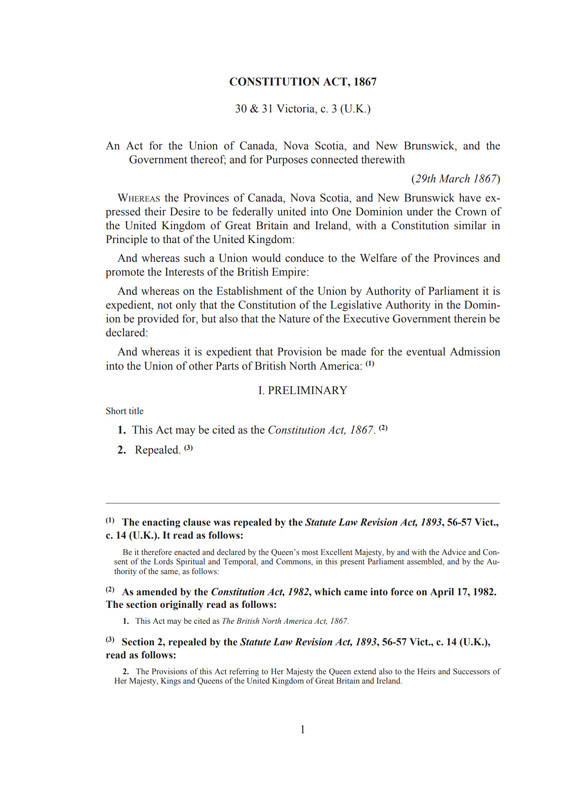Since the British North America Act, 1867, was a British statute, the Parliament of Canada had to ask the Parliament of the United Kingdom to make any constitutional changes (called amendments) that Canada desired. This was frustrating for Canada and time consuming for the British Parliament, which quickly became quite eager to give up this responsibility. In fact, the Statute of Westminster, 1931, legally recognized that the British Parliament could not act to alter the British North America Act or make any amendments without the request of Canada's Parliament.
Even with the Statute of Westminster in 1931, it took another 51 years before Canada secured the responsibility of directly amending its own constitution, largely because Canada’s federal and provincial governments could not agree on what the amending formula (the rules for making changes to the constitution) should be if the constitution needed to be changed. It wasn't until 1982 that the British North America Act and 30 other documents - including British statutes and the Orders in Council that had previously amended Canada's constitution - were legally entrenched in Canada and became the country's own responsibility. It was at this time that the British North America Act, 1867, was renamed the Constitution Act, 1867.

